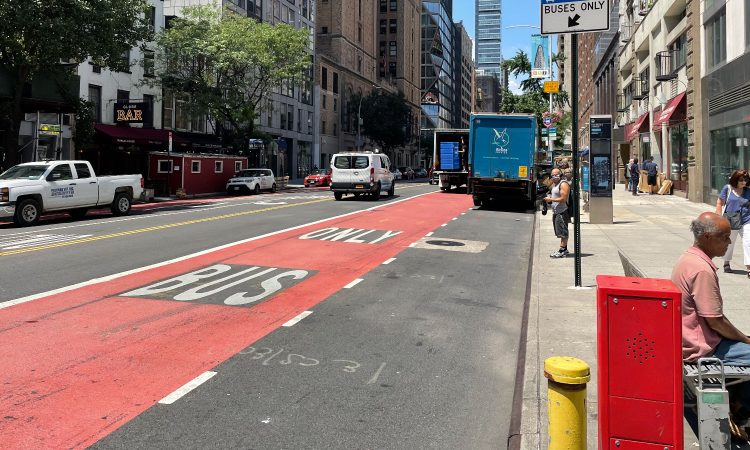The missing piece to the transportation puzzle is AI
- Like
- Digg
- Del
- Tumblr
- VKontakte
- Buffer
- Love This
- Odnoklassniki
- Meneame
- Blogger
- Amazon
- Yahoo Mail
- Gmail
- AOL
- Newsvine
- HackerNews
- Evernote
- MySpace
- Mail.ru
- Viadeo
- Line
- Comments
- Yummly
- SMS
- Viber
- Telegram
- Subscribe
- Skype
- Facebook Messenger
- Kakao
- LiveJournal
- Yammer
- Edgar
- Fintel
- Mix
- Instapaper
- Copy Link
Posted: 27 September 2022 | Hayden AI | No comments yet
Hayden AI outlines a few ways that artificial intelligence can unlock the potential of our streets and help maximise the efficiency and effectiveness of public transit services.


Credit: Hayden AI - A block bus lane in New York City
Cities across the globe are beginning to implement new transportation policies to better manage crowded streets and traffic, like congestion pricing in New York City, Direct Vision Standard in London, and dedicated busways in cities around the world. One technology that has already been transforming the way we get from point A to B is artificial intelligence (AI).
From advanced driver-assistance systems to Google Maps Live View and curb management platforms, AI has already been applied to several transportation modes. AI can maximise the efficiency and effectiveness of our streets, improving and streamlining operations for everything from public transit to street sweepers, garbage trucks and more. With a new report from the National Association of City Transportation Officials (NACTO) recommending cities to build and enforce bus lanes, transit agencies have even more reason to leverage new AI-powered technologies, like Hayden AI, to make traffic flows smoother and safer. Here, we outline a few ways AI can unlock the potential of our streets.
For public transport, illegal parking at bus stops pose a serious safety issue for riders, as it forces people to walk through an active travel lane to board or exit the bus. It also makes boarding sometimes impossible for people using wheelchairs and other mobility-assistive devices. Hayden AI’s automated bus enforcement platform can capture and process every single vehicle illegally parked at a bus stop to improve safety and access for riders.
Thus, Hayden AI’s automated bus lane enforcement platform empowers cities and transit agencies to substantially improve transit services for everyone and increase ridership. In fact, we recently launched a partnership with New York City’s Metropolitan Transportation Authority (MTA) to install up to 500 of our AI-powered camera systems on MTA buses to conduct automated bus lane enforcement.
With improved speed and reliability, buses are more likely to stay on schedule, which can increase ridership. When deciding to take public transit, improvements in bus service reliability have about twice as much effect as the cost of rides. To put it simply: passengers just want bus services that they can rely on.
Related topics
Artificial Intelligence, Fleet Management & Maintenance, Passenger Accessibility, Passenger Experience, Public Transport, Traffic Management, Vehicle & Passenger Safety
Related modes
Bus & Coach
Related cities
New York
Related countries
United States
Related organisations
Hayden AI, Metropolitan Transportation Authority (MTA)







